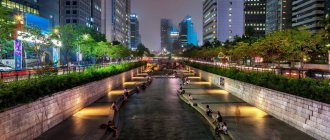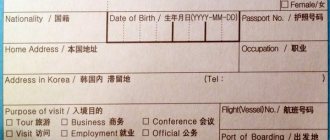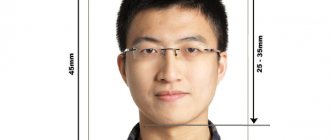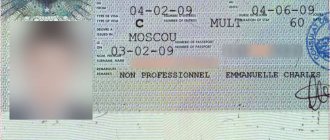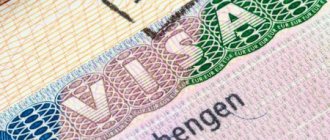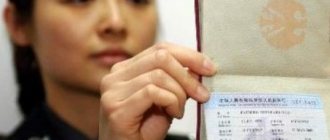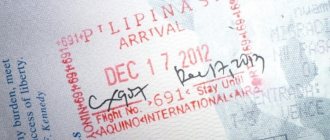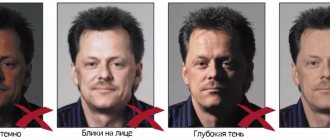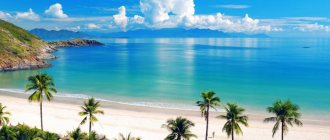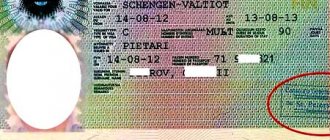Entry without a visa to Korea
Entry stamp to Korea. Photo from 2f.ru.
South Korea is very attractive for tourists who live in the Far East, since it is much closer for them to fly to this country than to Moscow. Therefore, if they want to see something new, travelers go there. In order to simplify bureaucratic procedures, South Korea and the Russian Federation have adopted a mutual visa-free regime.
In order for a visa to South Korea to be issued automatically at the border, you must take a valid foreign passport, the validity of which will not expire within six months from the date of entry into the country.
You will need to provide a migration card; it is issued on the plane or other transport on which the tourist travels.
It is required to fill out a customs declaration, take with you tickets for returning from the state and material proof of the tourist’s well-being.
It is important to know! South Korean border guards are loyal to tourists from the Russian Federation, so they do not find fault with documentation, and the process of obtaining a permit is completed in 5 minutes.
What is a migration card when entering Korea?
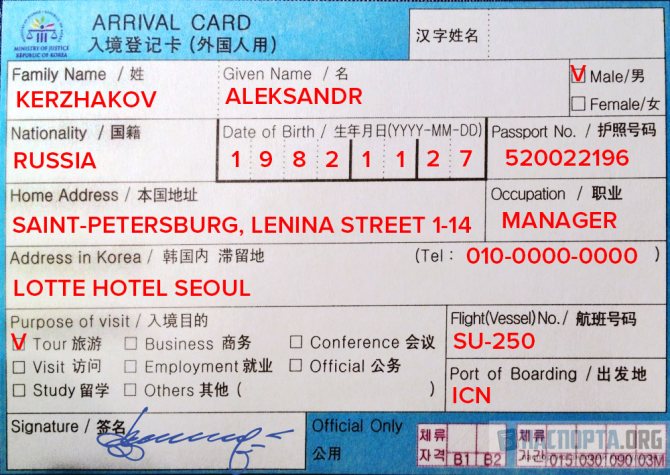
A migration card is a small form on which individual information about the tourist, his address and passport details are recorded. The documents are very easy to fill out - you just need to answer the questions asked.
Sample of filling out the migration card of South Korea (754 Downloads)
Procedure for filling out a migration card:
- Family Name - surname (as in a foreign passport);
- Given Name - name (as in a foreign passport);
- Male / Female - gender: male / female;
- Nationality - citizenship, you can specify RUSSIA or RUSSIAN FEDERATION;
- Date of Birth—date of birth in YYYY-MM-DD format;
- Passport No. — passport number;
- Home Address - home address according to registration;
- Occupation - profession, you can enter the standard MANAGER;
- Address in Korea—address of residence in Korea, you can specify the name of the hotel;
- Tel: — contact telephone number for the address of residence in Korea;
- Purpose of Visit - purpose of the visit: Tour - tourism; Business - business; Conference - conference, symposium; Visit - private visit, visiting relatives, friends; Employment - work; Official - official visit; Study - training; Others - other;
- Flight (Vessel) No. - number of the flight on which you arrived in Korea;
- Port of Boarding - port of arrival;
- Signature - place of signature;
- Official only - do not fill out.
How to fill out a customs declaration correctly?
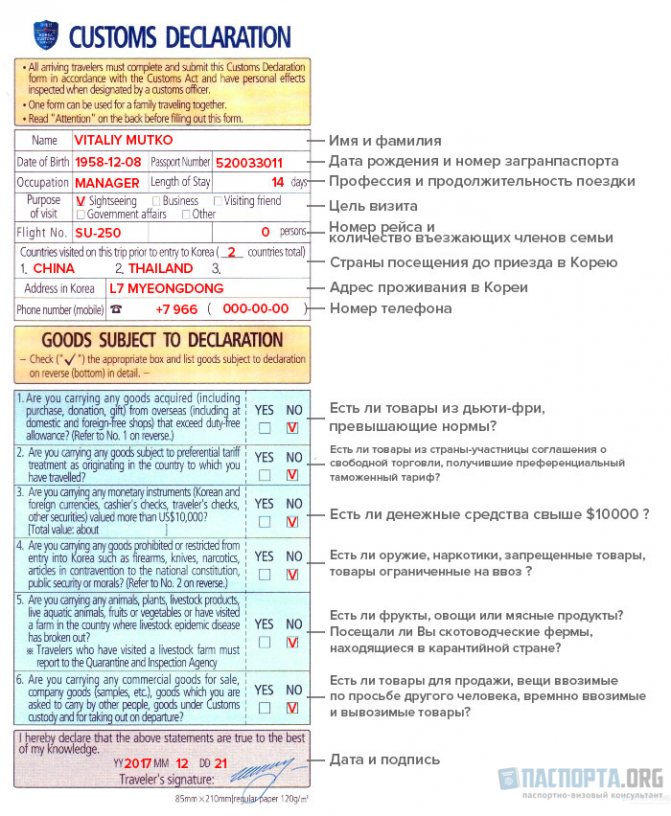
Sample of filling out the customs declaration of South Korea.
To fill out a customs declaration, demonstrate knowledge of English.
If difficulties arise in filling out the forms, contact transport workers.
You cannot import any fruits and vegetables, alcohol - one bottle per person no more than 1 liter, cigarettes - one carton per person.
Sample of filling out the customs declaration of South Korea (549 Downloads)
Procedure for filling out a customs declaration:
- Name - First and last name (as in the international passport);
- Date of Birth—date of birth in YYYY-MM-DD format;
- Passport Number - passport number;
- Occupation - profession;
- Length of Stay / days — duration of the trip in days;
- Purpose of visit - purpose of the visit: Sightseeing - tourism, sightseeing; Business - business; Visiting friend - visiting friends, relatives; Goverment affairs - state affairs; Other - other;
- Flight No. / persons - the number of the flight that arrived in Korea, and the number of arriving family members;
- Countries visited on this trip prior to entry to Korea (__ countries total) - countries visited before arriving in Korea (__ number of countries);
- Address in Korea - Address of residence in Korea, you can enter the name of the hotel;
- Phone number (mobile) — contact phone number.
There are six questions on the customs declaration that must be answered “Yes” or “No”:
- Are there any goods purchased (bought, gifted, purchased for free) in a duty-free store abroad (including duty-free stores within the country) that exceed the limits indicated on the back of the form.
- Are there any goods produced in a free trade agreement country that receive preferential customs tariffs?
- Are there more than 10,000 (10 thousand) US dollars equivalent (travelers' checks, Korean currency and other securities? You should also indicate how much money is available.
- Are there any weapons, drugs, or goods that are not acceptable by law, rules, or traditions of the country, subject to a ban or restrictions on import, indicated on the back of the form.
- Are there flora and fauna objects, their parts and products obtained from them are subject to quarantine inspection. Experience of visiting a livestock farm located in a country where a livestock epidemic has been detected. A visitor to a livestock farm must make a declaration to the main quarantine inspection office.
- Are there goods for sale, goods for use at the enterprise (samples), things imported at the request of another person, goods temporarily imported and exported.
At the end, you must put a date and signature.
South Korea visa application form
The consul accepts applications for a visa to South Korea in 2021, filled out in block letters or in electronic format. If the handwriting is illegible, and the application contains incomplete and unreliable information, the visa may be refused. Documents are accepted from Monday to Friday. If you have not filled out the form in advance, come to the consular office in advance.
Before submitting the form, you must paste a photo on it. Visa applications without photographs or in black and white will not be considered.
How to fill out the form correctly
1. The first page of the application form must contain the passport data of a Russian citizen (number, series). If the applicant has a different citizenship, he indicates the information from the passport issued to him.
2. When filling out the “citizenship” column, you must indicate the country of citizenship, not nationality.
3. The applicant’s first and last name are written in English (similar to a foreign passport).
4. When filling out the second page in the sections containing questions about the foreign passport, in the line “place of issue” you need to write the name of the authority that issued the passport (for example, FMS 0088) and the locality itself (for example, Krasnodar). The data specified in the application form and in the passport (No., date of issue and expiration date) must be identical. If any discrepancies are identified, the visa may be refused.
5. If you have dual citizenship, you must fill out information about your second passport.
6. The “address” column contains complete information about the place of residence - region, city (town, village), street, house, apartment.
7. The “contact information” section is filled out as follows: it indicates the telephone number of the tourist directly and of another citizen who can be contacted in case of emergency situations. The name of this person is written in English, indicating family or friendly ties to the migrant (spouse/brother/father/comrade), as well as place of residence.
8. When choosing the “other” answer option in any section (i.e., if there is no option that corresponds to the situation), you must provide accurate information. If this concerns the “education” column, then it is necessary to indicate the specific educational level - specialist, master, general secondary education, etc. Write the name of the university, its location and the specialty received.
9. When filling out the “emergency contact number” column, indicate in English the first and last name of the person whose contacts you are providing.
10. When filling out the “inviting party” column, you must provide the relevant data: name of the institution, university, etc.
11. The “travel information” section with the “purpose of trip” subsection must contain clear information (tourist trip, employment, trip to family) indicating the duration of the visit and the date of the expected border crossing.
12. There are special requirements for obtaining a visa for children. The application form for the child is filled out indicating full information about the accompanying parent.
13. When filling out the “Visit Information” column, indicate the exact number of days or years that you expect to spend in the country, with the exact date of entry.
14. If you used the help of a third party when filling out the questionnaire, provide information about him.
15. When applying for D-9 and C-3-4 visas, pay attention to the “purpose of travel” section. Due to the fact that the sender of the funds is not a Korean citizen, in this column instead of “employment” you must write “business trip”.
The consular representative will not accept applications for a visa to South Korea in 2021 that do not indicate the date of submission and do not have the signature of the applicant. The date is given in year/month/day format.
What visas are issued to South Korea?
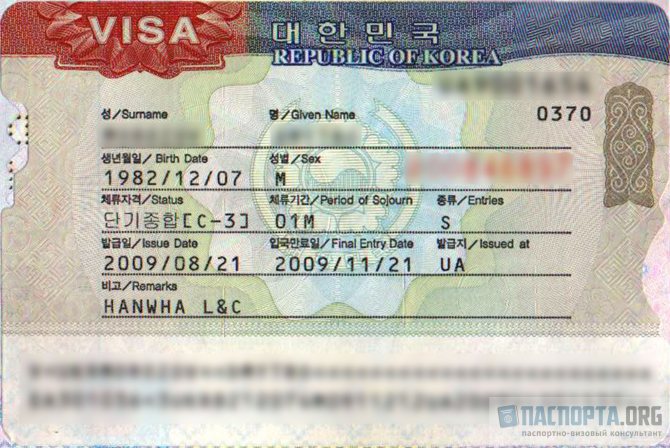
Photo taken from tripsolutions.com.ua. If a traveler from the Russian Federation is planning a long stay in South Korea, he needs to understand what types of visas to Korea there are and first obtain an entry document. Such permits are issued depending on the purpose of travel and length of stay in the country.
Work Visa
For those wishing to get a job in South Korea, a work visa (D, E, H categories) is issued. Only truly first-class specialists with extensive knowledge and relevant skills will be able to obtain permission.
A work visa to the republic is issued only if the employer company provides an official invitation to the employee.
student visa
Students wishing to study in South Korea apply for a student type of document.
It is important to know! Not all universities in the state offer education to foreigners. You can view a list of such higher educational institutions on the page of the Korean Embassy.
F4 visa for Koreans
Koreans living in other countries, but still periodically flying to their homeland, apply for visas for foreign ethnic residents (category F4).
Most often, this type of visa is issued to highly qualified workers, masters and graduate students with an academic degree, or employees of South Korean companies that have previously worked in the state and have proven themselves well.
Research visa
For certain persons, a researcher visa is issued (category E1, E3, E5). The document is issued to persons who have conducted scientific research in the Southern Republic. Such permission is quite difficult to obtain, but if you correctly present the purpose of your trip to the embassy and demonstrate the real benefits of your research, you will be able to issue the document.
Types of visas to South Korea
South Korean visas are divided into a number of groups. The type of document depends on the expected duration and purpose of the visit.
Sample F-4 Visa for South Korea
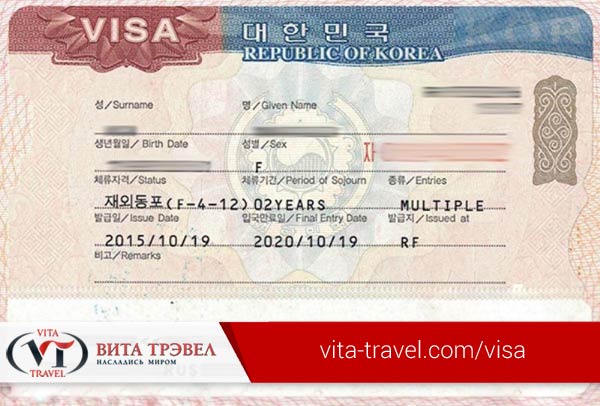
Type C visas
They are considered short-term and are issued for 3 months. There are C-visas:
- tourist;
- guest;
- workers;
- to solve business issues;
- for media workers;
- for crews of sea vessels.
To obtain a C-visa, the original letter of guarantee and invitation are required. If the planned stay is more than 3 months, citizens of the Russian Federation and a number of CIS countries will have to undergo a medical examination (check for the presence of tuberculosis).
Student visa type D
Russians wishing to study at South Korean universities will need a D-study visa. It is drawn up on the basis of papers on admission to an educational institution (original invitation). There is a list of educational institutions that have the right to admit foreign students. This list is updated annually. Our specialists will provide you with more detailed information.
F-4 visa to South Korea (for ethnic Koreans)
Russian ethnic Koreans (up to 3rd generation) are issued an f4 visa to South Korea. Those who were born or lived in the USSR before August 15, 1945 are also entitled to receive it. However, it is provided with the condition of submitting the entire set of documentation, which confirms the Korean roots of the applicant. We help spouses and children of F-4 holders obtain annual F1-9 visas.
F1-9 visa (for fourth generation ethnic Koreans)
It can also be issued to spouses of F-4 holders. The F1-9 visa is an annual multiple entry visa. That is, it is intended for repeated entries and exits within 12 months.
It is important to note that for stays longer than 91 days, applicants will need to be tested for tuberculosis. This procedure is mandatory not only for adults, but also for children over 6. For an examination, the results of which will be accepted by the consulates, you must register at a certified medical institution (Ekaterinburg clinic “Health 365”).
Work visa (types D, E, H)
These types of South Korea visas are provided by work invitation. This invitation is drawn up by the receiving employer in accordance with all current rules. In addition, a work visa can be requested by sending an application to the South Korean embassy. However, this option is more complicated.
Contact us to obtain your visa in a timely manner with our help!
Validity periods for visas to South Korea
Each South Korean visa has its own validity period. When its expiration date comes to an end, there is the possibility of prolonging or opening a document of a different type.
| Type of visa | Validity periods |
| Entry stamp (visa-free regime) | 60 days |
| Long-term visa (D, E, H, F-4) | From 91 days to 2 years |
How to get a visa to South Korea?
A pressing question among travelers is how to apply for a visa to South Korea. To do this, you need to prepare a special documentation package, it consists of:
- application form in Korean or English;
- international passports;
- copies of the foreigner's spread;
- photograph (size - 35 by 45 mm on a pastel background), all photo requirements for a Korean visa are no different from those for other countries;
- requests from a private inviting person, educational institution or work establishment.
It is important to know! To apply for a visa to South Korea, you do not need to provide confirmation of your hotel, hostel or other accommodation reservation. There is also no need to demonstrate recorded information about your financial status, as well as notifications from work and bank account statements.
Having prepared a list of documents for a visa to Korea, you need to deliver them yourself to the South Korean mission or send them from any region using the Pony Express service. After submitting all documents, you must wait for the consulate's decision.
Application form for a visa to South Korea (348 Downloads) Instructions for filling out an application form to South Korea (283 Downloads) Photo requirements for a visa to South Korea (211 Downloads)
A Korean visa can be obtained from embassies, consulates or visa centers.
Documents for a visa to South Korea
The list of documents for a visa to South Korea presented when crossing the border in 2021 is limited to a valid passport and two completed cards (migration and customs). Printed forms are available on board the aircraft. The counters in the arrivals hall are equipped with the same forms. Persons carrying out passport control may ask a foreigner to present a tourist voucher, hotel reservation or return ticket. Financial security is confirmed by a bank card valid in the territory of the republic or in cash.
List of documents
A tourist visa is issued on the basis of the following documents:
- a foreign passport valid for 6 months or more (counted from the day the package is submitted to the consulate);
- copies of the first page of the foreign passport, which contains the applicant’s personal information;
- copies of an out-of-date international passport containing visa stamps from the Schengen countries and countries such as Australia, Japan, Canada and the USA (if available);
- color photograph 35x45 mm (1 copy, light background);
- 2 copies visa application form (filled out in English or Korean, the applicant’s signature is checked);
- hotel and air ticket reservations;
- certificate from the place of employment, which indicates the position and salary;
- the original invitation letter issued by the host party or the booked hotel;
- copies of tickets in both directions (providing is desirable, but not required).
Additional documents
Documents of this type include:
- program of stay in South Korea by day (the inviting person or travel agency must confirm that they take responsibility for the actions performed by foreigners);
- health insurance policy for the entire period of stay;
- pension certificate (relevant for persons receiving pension payments).
Children
If you need to enter South Korea for a child, you need to ensure that you have:
- copies of: double-page spreads of the internal passport of the person sponsoring the trip (pages with photo and registration); birth certificates; consent for the minor to travel abroad, signed by the parent remaining at home;
- certificates from the place of study;
- a sponsorship letter and a certificate from the place of employment of the person covering the costs of the trip.
Entrepreneurs
The certificate provided from the place of work must be on a form. The presence of the seal, signature of the entrepreneur and the chief accountant is checked. Basic documents for a visa to South Korea in 2021 must be supplemented with copies of documentary evidence of the facts of individual entrepreneur registration and registration with the tax authority.
Unemployed
Persons in this category must present a certificate from the bank.
Methods for submitting documents
Lawyers for the “Investor Visa” website recommend paying attention to the fact that the applicant can submit documents in person to the Embassy or Consulate of South Korea in Russia. In addition, it is possible to use the Pony Express courier delivery service or a travel agency accredited by the consulate.
Visa to Korea for a child

Children can also enter South Korea with their parents under a visa-free regime, adhering to its rules and regulations.
To do this, parents need to take the child's birth certificate. Notification is not always requested, but it is still better to have it.
If a young traveler goes to Korea without his parents, they will need an official power of attorney to authorize the trip. If you need to get a long-term visa, it is issued in the same way as for an adult.
Tours to South Korea
Holidays in South Korea
South Korea is an amazing country, in the truest sense of the word.
Tell me, where else can you experience such breakneck speed of mobile Internet or soak in a thermal spring with a view of the mountains? Where can you celebrate Buddha’s birthday in a fun and grand manner and try the soup with the unpronounceable name tokguk? You can get all this if you buy a tour to South Korea and go on an exciting journey. An incredible amount of entertainment, excellent resorts, delicious food, beautiful and well-kept cities - South Korea can give all this to travelers. Yes, of course, it’s not easy for the indigenous residents and those who came here to earn money, since they have to work a lot and huddle in tiny (really tiny) apartments. But tourists here feel comfortable and cozy.
South Korea cannot be called a budget country for tourism, since flights here are expensive and accommodation is quite expensive. But this does not bother Russian tourists at all, and they almost go in droves to Seoul in search of adventure, and from the capital they disperse throughout the country.
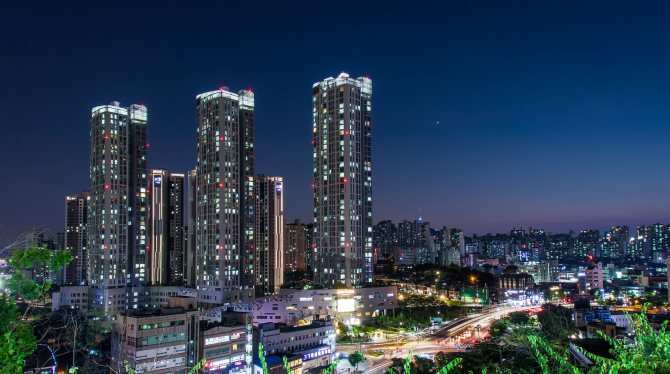
The best resorts in South Korea
In fact, this section deserves its own article, since this East Asian country is rich in modern cities with a well-developed tourism sector. The following destinations will be especially attractive for travelers:
- Muju. It is rightfully considered the largest ski resort in the country, and if you haven’t snowboarded for a long time or, on the contrary, have always dreamed of learning how to stay on a board and slide along the snowy slopes, then be sure to go to the national park in the Togyusan Mountains.
- Yeonpyeong. The unpronounceable name gives this resort additional mystery. Walking under the arches of ancient pagodas and enjoying the surrounding beauty will give you incredible pleasure. There is also a hippodrome, karaoke, restaurants, swimming pools and much more for a great holiday.
- Incheon. Perhaps the best place for lovers of spa treatments. Here you can soak in the fruit pool, steam in the coal sauna and relax in a real cave.
- Busan. Ideal choice for tanning. Step onto the sands of Haeundae Beach and rent an umbrella to enjoy stunning views of the sea. And if you are hungry, you can order amazing seafood dishes in the restaurants adjacent to the beach.
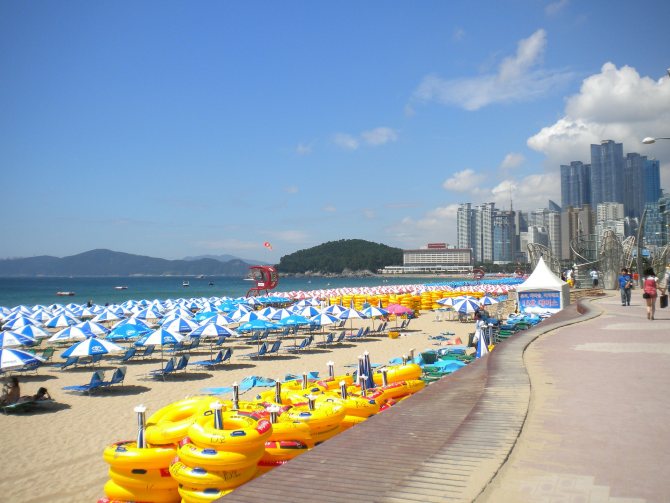
The most interesting sights
Perhaps, like any other eastern country, South Korea is unusually rich in beautiful temple complexes, palaces and monasteries, and most of the historical monuments are located in beautiful places with blooming greenery. This is exactly how the famous Gyeonghee Gun Palace appears to tourists.
The famous Gyeongbokgung Palace, built back in the 14th century, is considered no less luxurious. Another palace, Deoksugung, is not inferior to it in its beauty, although its scale is a little smaller.
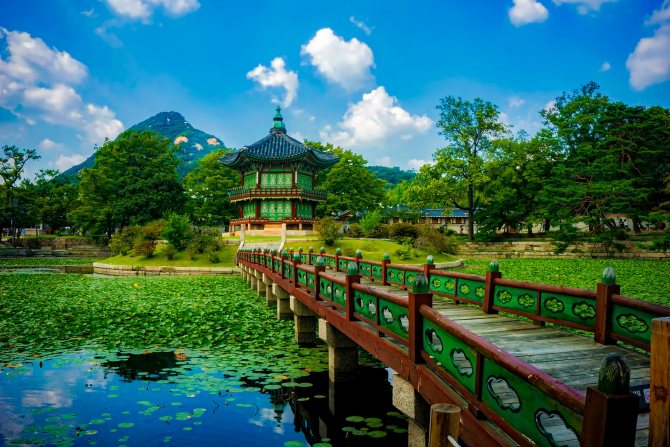
The excursion program in South Korea is very rich, interesting and multifaceted, and a huge number of attractions are concentrated in the capital. In Seoul we recommend you visit:
- the famous War Memorial;
- a bridge called "Rainbow Fountain";
- Museum of Optical Illusions;
- Namsan Park is the best place for autumn walks and colorful photo shoots;
- Myeongdong Cathedral and many other attractions.
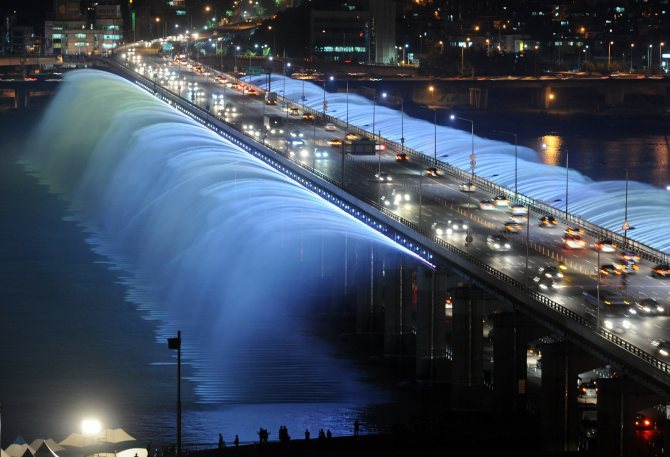
When is the best time to go?
Here you need to start from the purpose of your trip to South Korea. If you are attracted by thermal springs and ski resorts, then go from mid-autumn to mid-spring. But if you want to enjoy excursions and entertainment, then the period from April to October is suitable.
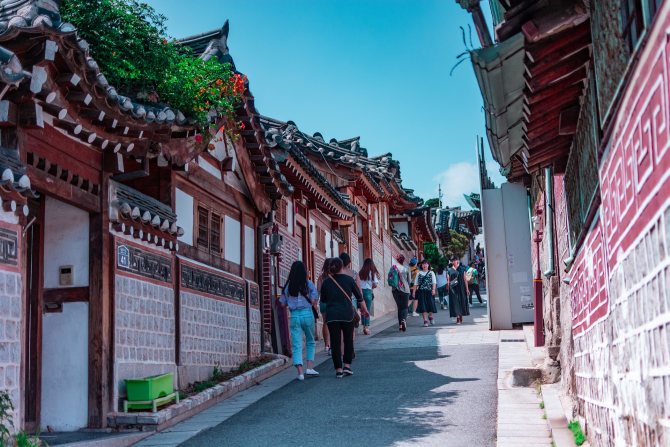
Hotels
Hotels in South Korea are luxurious, and this fact is undeniable. Guests are treated respectfully, with emphatic politeness and are always happy to serve so that dear guests do not feel embarrassed. Of course, such a high level of service costs accordingly, but in general, accommodation in South Korean hotels costs an average price. For example, in the excellent The Shilla Seoul you can relax for 19 thousand rubles per day.
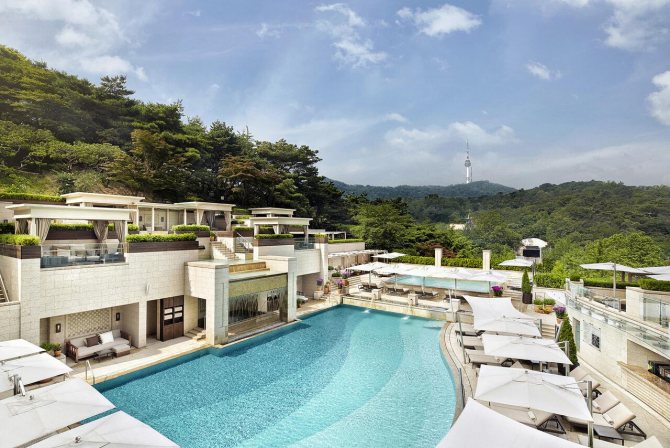
If you are looking for a budget option, you can stay in a hostel. A bed is inexpensive, and the attitude towards tourists is invariably polite. This type of vacation is perfect for young tourists who can’t wait to travel the whole country!
Checking the readiness of a visa to Korea
In order to track your visa to South Korea, you need to:
- Go to the official website of the Embassy of the Republic of Korea - overseas.mofa.go.kr.
- Click on the item “Check order status”.
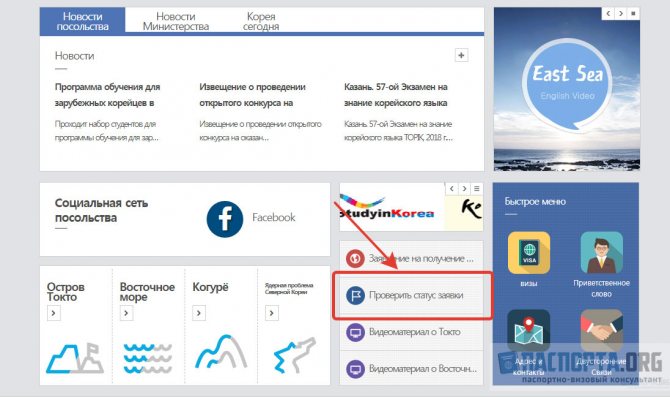
- Point to the “Check Application Status” menu item and select the “Check Application Status & Print” sub-item
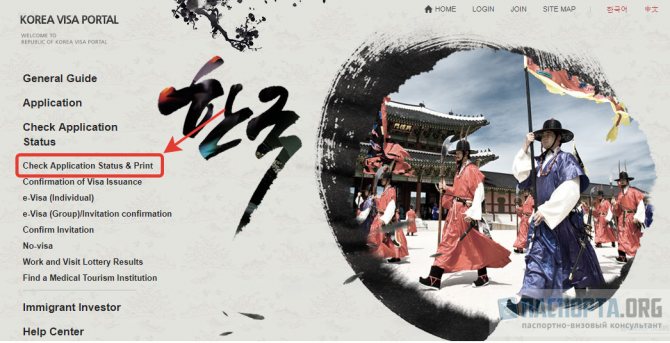
- On the page you must enter the following data:
- type of visa requested;
enter the application number;
- name in English;
- date of birth.
- After clicking the “Search” button, the visa status will be displayed:
- Approved: approved;
- Denied: refusal (reason for refusal is indicated below).
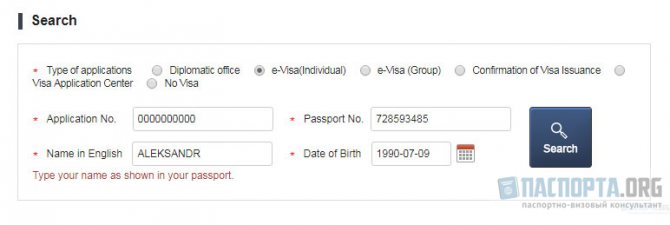
Do Russians need a visa to South Korea?
Given the restrictions imposed by visa-free stay, many Russian citizens need a visa to South Korea. It is required for the following purposes of entry:
- visit lasting from 2 months (long-term vacation, long business trip, etc.);
- employment;
- getting an education.
A visa should be obtained in advance from South Korean consular services operating in the Russian Federation.
You can go there yourself. But for greater confidence in a positive result, it is better to entrust this procedure to professionals. This is not only more reliable, but also more profitable. The VITA Travel travel agency will help you obtain a visa to South Korea. Contacting our managers will simplify the visa process as much as possible and save your time. You will easily receive the necessary entry document and be able to go on your planned trip.
Types of visas to Korea
- A, B, C. Are short-term. They are issued for 90 days. They can be tourist, work, guest, intended to resolve business-related issues. To obtain such permission you need an invitation and a letter of guarantee.
- D, E, H. These are long-term work visas, as well as student visas, which are issued to students of language courses, applicants to Korean educational institutions, employees going on long business trips, and religious figures.
- Such a permit can be applied for by people who have already lived in the country under documents D, E, H and intend to stay in it. It is also issued to people who have relatives in the state for regular visits.
Each letter has its own subtypes of permissions. They are designated by a number, for example, F-4 - a visa for ethnic Koreans. Such a permit can be obtained by those who are able to confirm their Korean roots or were born or lived in the USSR before 08/15/1945. Spouses and children of holders of such visas are usually issued F1-9 type permits.
Each South Korean permit is characterized by its own validity period. As soon as the period comes to an end, you can extend or open a different type of permit.
Get a free consultation
Types of visas to South Korea
Depending on the purpose of the trip and the length of stay in the country, visas to Korea are divided into short-term (C-1, C-3, C-4), long-term (D-1 - D-9), long-term for the purpose of work (E-1 – E-7), residence permit (F-1 – F-6, H-2).
Working (category E-1-E-7)
Category E (contract work, scientific and research activities) for employment is issued only to ethnic Koreans and highly qualified specialists who confirm their qualifications with the Migration Service. Applicants for positions of management, narrow specialization, specialists with a rare profession and serious work experience can apply for a work visa for the purpose of employment in South Korea. All aspects are discussed with the Korean company, which is looking for employees. This category is also issued for long business trips.
An entry permit for scientific purposes (E-1, E-3, E-5) is easy to obtain, but you will have to prove the purpose of the work related to scientific research. Registration of an entry permit and payment of the fee takes place online. If the decision is positive, the consulate will send the visa by email. It should be printed and shown at customs control.
A work visa to Korea is issued for a year or for the period specified in the contract, and is a single entry visa.
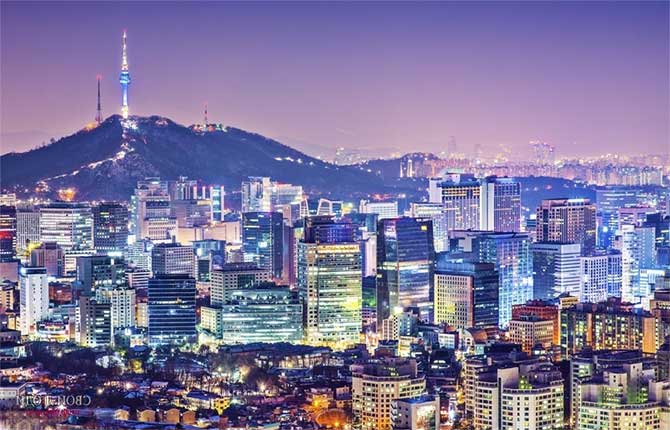
To obtain category E, you will need the following documents: a certificate of health of the applicant, proof of absence of problems with the law, an agreement or contract from the employer, a description of work experience, documents on completed higher education certifying the applicant’s qualifications.
Student
Students, masters, and graduate students coming to the country are issued category D. In turn, depending on the purpose of the trip, category D is divided into subcategories:
- if a student goes on an exchange study, he is given category D-2.
- For internships at industrial enterprises – category D-3.
- Studying in language courses requires obtaining category D-4.
To obtain a student category (D-2, D-4), you will additionally need the following documents: an invitation from the host university, in the case of paid education - confirmation of payment, a medical certificate of health, a short biography of the applicant, a document on completed education or from the current place study.
Also, category D is issued to journalists, people who are engaged in non-profit activities in the field of art, religious figures, employees of foreign or joint ventures who come to work in branches of Korean companies.
They are single-use and issued for a period of more than 90 days and multiple-use for up to 1 year.
Tourist
As mentioned earlier, a tourist visa is issued if a person decides to stay in the country for more than 3 months. For tourist purposes, short-term visas of category C-3 are issued, which are divided into:
- For a group tourist trip, category C-3-2 is issued.
- If a person is sent for treatment, then this is considered medical tourism. He is given category C-3-3.

- The most common category is general tourist C-3-3.
Can be single or multiple.
Ethnic
Category F-4 is issued to ethnic Koreans who are planning to return to their homeland. Ethnic Koreans who qualify for this category include:
- Aged 60 years or older.
- Studied at higher institutions in Korea and worked in their specialty for at least 6 months.
- Highly qualified specialists in demand at Korean enterprises. In the process of work, a person must demonstrate his best professional qualities.
It is also necessary to comply with the country's migration legislation.
The F-4 category has no expiration date, but must be renewed every 5 years. An entry permit gives the right to live freely in the country and engage in work. Possibility of obtaining the F-19 category for a spouse and minor children.

You will have to provide proof of Korean passage as part of your entry permit documents.
Transit
As a result of increasing the period of stay in the country without a visa, there is no longer a need to obtain a transit visa if a person is traveling to another country through the territory of the Republic of Korea.
